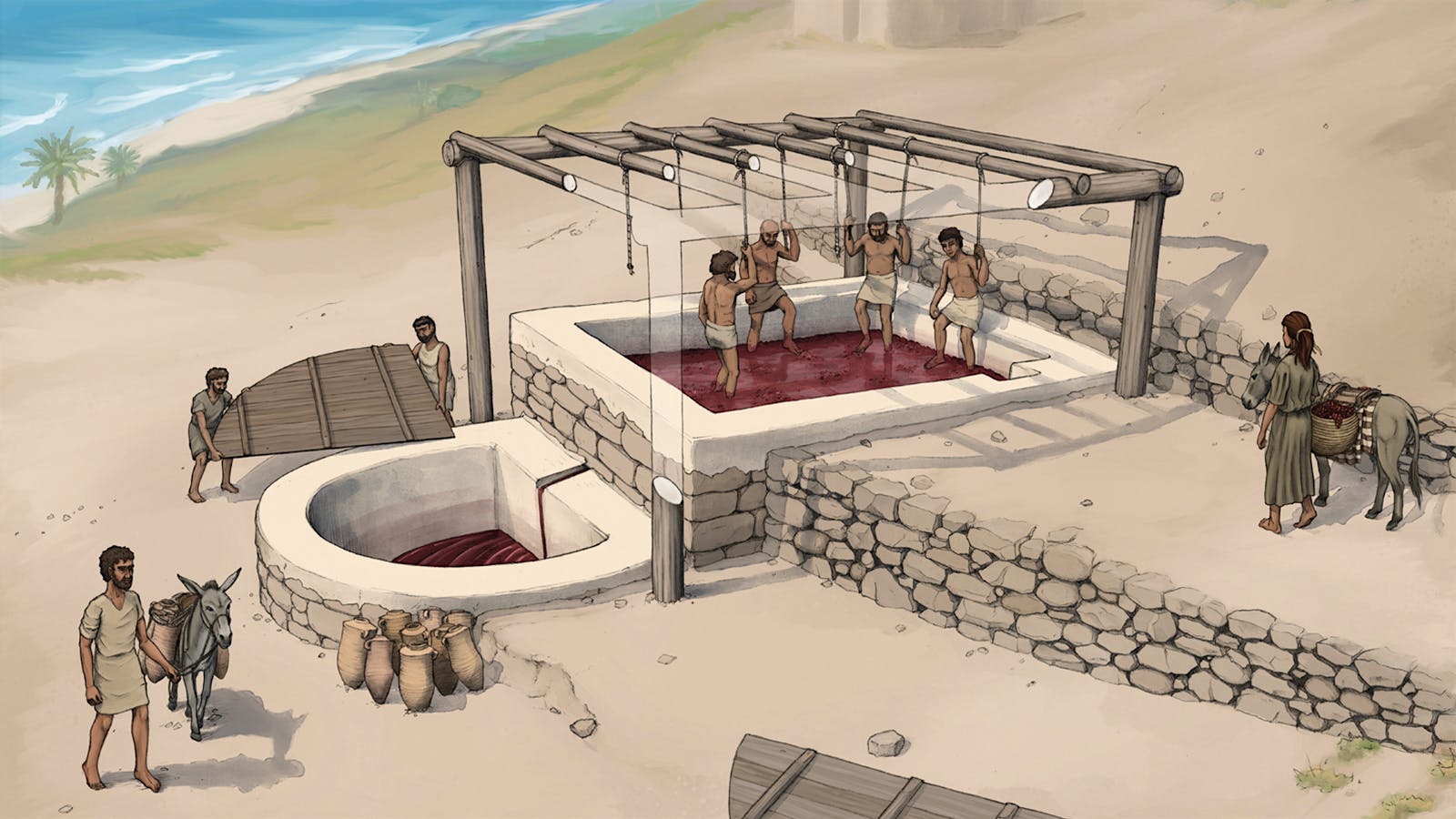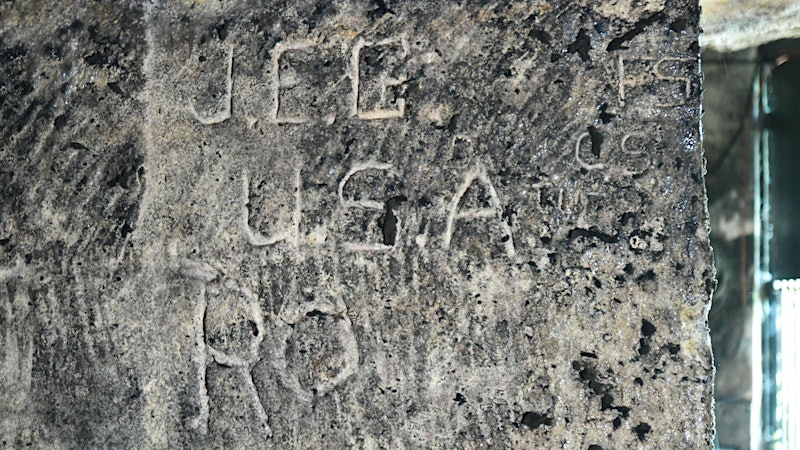It's been a big year for exciting finds in ancient wine, and the latest one is outsized in both significance and, well, size. Archaeologists have unearthed a 2,600-year-old Phoenician wine press at an excavation in Lebanon of a site called Tell el-Burak. The ancient wine installation is particularly noteworthy for numerous reasons: its dimensions, its location and the rare evidence it provides of local production meant for export.
The Phoenicians were known for winemaking know-how, but finding physical evidence of it had proved tricky. "Phoenician wine is known to us from ancient texts," Hélène Sader, professor of archaeology at the American University of Beirut and co-director of the Tell el-Burak Archaeological Project, explained to Unfiltered: Ancient Egyptians and Greeks both mention wine from the civilization's prosperous seaside cities. "Now we have evidence that wine was produced in Phoenicia and exported."

Tell el-Burak provides the key to the production side of things. In findings published this month in the journal Antiquity, Sader and her team described the wine facility, the first discovered from the Iron Age in what is now Lebanon. A rectangular basin could hold some 1,200 gallons of grape must, which the winemakers crushed by foot, with juice draining into a vat slightly below; the site, which dates to at least the 7th century B.C., is remarkably well-preserved by the lime plaster coating that once kept the juice from leaking all over the place. The grapes would have been local, coming in from nearby vineyards.
But the resulting wine made its way across the Mediterranean, as previous discoveries of Phoenician amphorae at far-flung sites shows. "The most telling evidence is the discovery of two shipwrecks off the shore of Ashkelon [in modern-day Israel] en route for North Africa, which contained a shipment of Phoenician amphorae containing wine," said Sader.
Wine was important to the economy and culture of the seafaring Phoenicians, who had a reputation for savvy in both drink and trade. "The Phoenicians used wine for religious and funerary rituals and offered it to their gods because they considered it to be a precious and valuable drink," explained Sader, adding that they exported it around the Mediterranean and perhaps beyond. "They also crossed the Straits of Gibraltar and reached the Atlantic coast of the Iberian Peninsula and Morocco."
What did they and their gods like most in their cups? Unfortunately, it's still unclear which ancient grape varieties they vinified and how those grapes might be linked to modern varieties. "The seeds collected at Tell el-Burak were charred and could not be studied for DNA," said Sader. Descendants of those varieties were wiped out by phylloxera.
But Sader has a clue to the hue. "It seems that the predominant wine that was produced in antiquity was red wine," she said. Lebanon's modern wine titans would approve.
Enjoy Unfiltered? The best of Unfiltered's round-up of drinks in pop culture can now be delivered straight to your inbox every other week! Sign up now to receive the Unfiltered e-mail newsletter, featuring the latest scoop on how wine intersects with film, TV, music, sports, politics and more.












